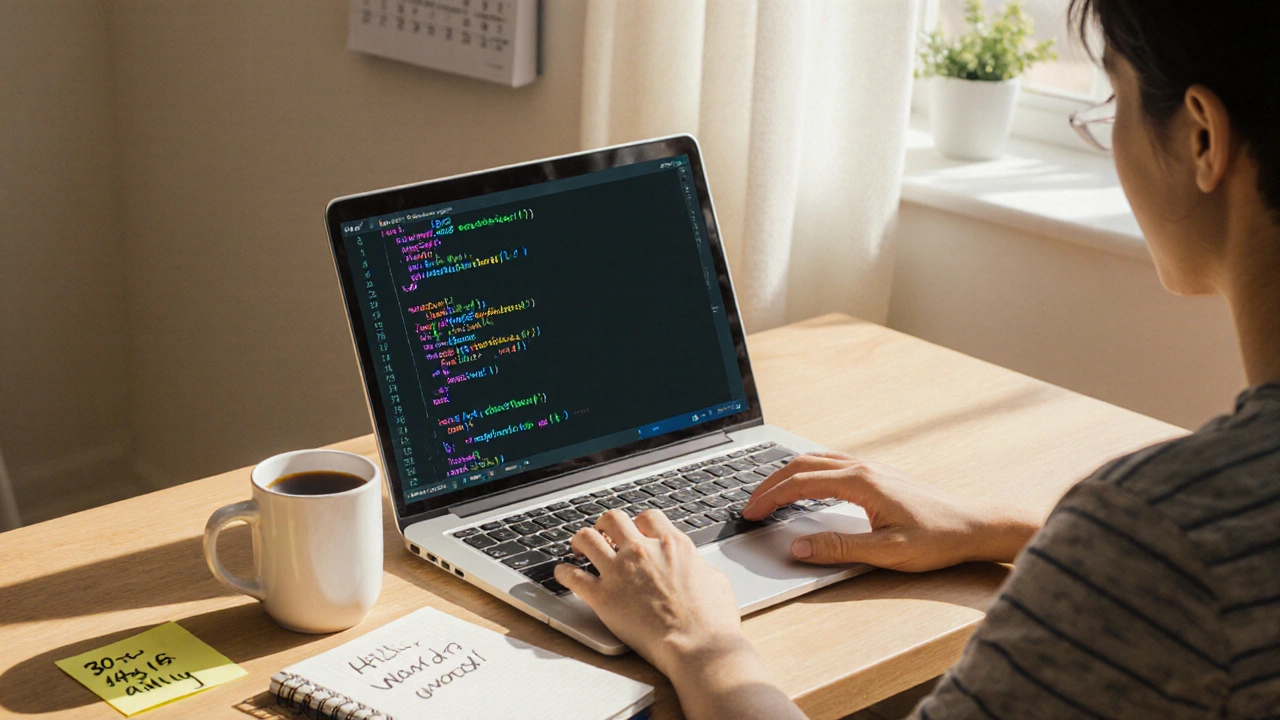Self‑Study Coding: Guide to Learning Programming on Your Own
When diving into self‑study coding, the act of teaching yourself software development without classroom instruction. Also known as self‑learning programming, it lets you set the pace, pick the tools, and track progress on your terms.
Key Elements of a Successful Self‑Study Journey
A common first step is picking a language, and Python, a versatile, beginner‑friendly language used in web development, data science, and automation often tops the list. Python’s clear syntax lowers the entry barrier, which means you spend more time building and less time decoding. Once you’ve settled on a language, you’ll also need online learning platforms, web services that host tutorials, videos, and interactive coding exercises like Coursera, Udemy, or freeCodeCamp. These platforms supply structured curricula, progress tracking, and community feedback, all crucial when you lack a classroom mentor. Finally, many self‑learners aim for coding certifications, short credentials that validate specific programming skills to employers. A certification can turn a personal project into a résumé bullet and open doors to freelance gigs or full‑time roles.
Self‑study coding self‑study coding thrives on routine. Create a weekly schedule that reserves at least an hour each day for active coding, and a longer block on weekends for deep‑dive lessons. Treat the schedule like a class you’re teaching yourself; consistency beats occasional marathon sessions. Use a habit‑tracker app to mark completed lessons, and reward yourself for streaks. The learning curve feels steep at first, but research shows that regular, spaced practice solidifies neural pathways, making later concepts click faster.
Resource selection matters as much as time management. Start with free tutorials that explain fundamentals—variables, loops, and conditionals—then progress to project‑based courses that require you to build something tangible, like a personal website or a data‑analysis script. Interactive coding sandboxes (e.g., Replit, Codecademy) let you experiment without setting up a local environment, lowering friction for early experiments. Pair that with version control basics using Git; even a simple commit history demonstrates professionalism and prepares you for collaborative work later.
Practice is the bridge between theory and skill. After watching a video, immediately apply the concept in a small code snippet. Incrementally expand the snippet into a mini‑project—perhaps a to‑do list app or a weather‑fetching script. When you hit a roadblock, search Stack Overflow, read related documentation, and try to solve the problem yourself before asking for help. This habit of debugging on your own sharpens problem‑solving instincts, a core attribute of any competent programmer.
When you feel comfortable with the basics, consider fast‑track certifications that can be earned in days or weeks. Platforms like Coursera and edX offer “Professional Certificate” tracks that combine video lessons, quizzes, and a capstone project. Choose certifications that align with your career goal—web development, data analysis, or cloud computing. A badge from a recognized provider signals to recruiters that you’ve mastered a specific stack, even without a formal degree.
The collection below pulls together articles that dive deeper into each of these topics: choosing the right programming language, mastering popular e‑learning platforms, navigating the coding certification landscape, and practical tips that make self‑study coding feel less lonely and more rewarding. Explore the guides to start shaping your own programmer’s path today.
Oct
25

- by Dhruv Ainsley
- 0 Comments
Self‑Taught Coding: How to Teach Yourself Programming
Learn how to teach yourself coding with practical steps, free resources, community tips, and a clear roadmap for building real projects and landing a job.